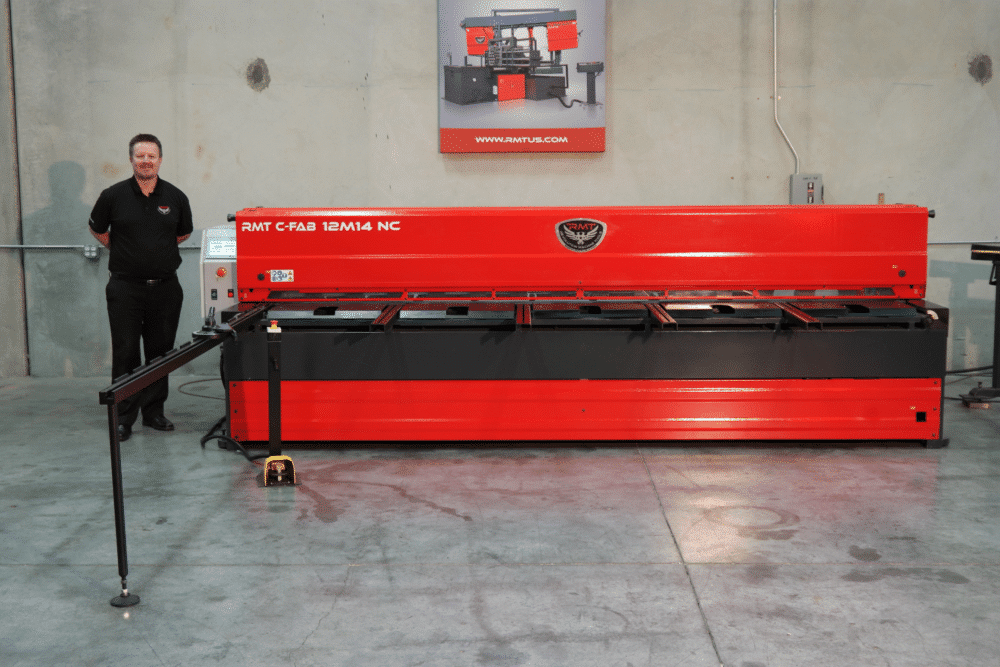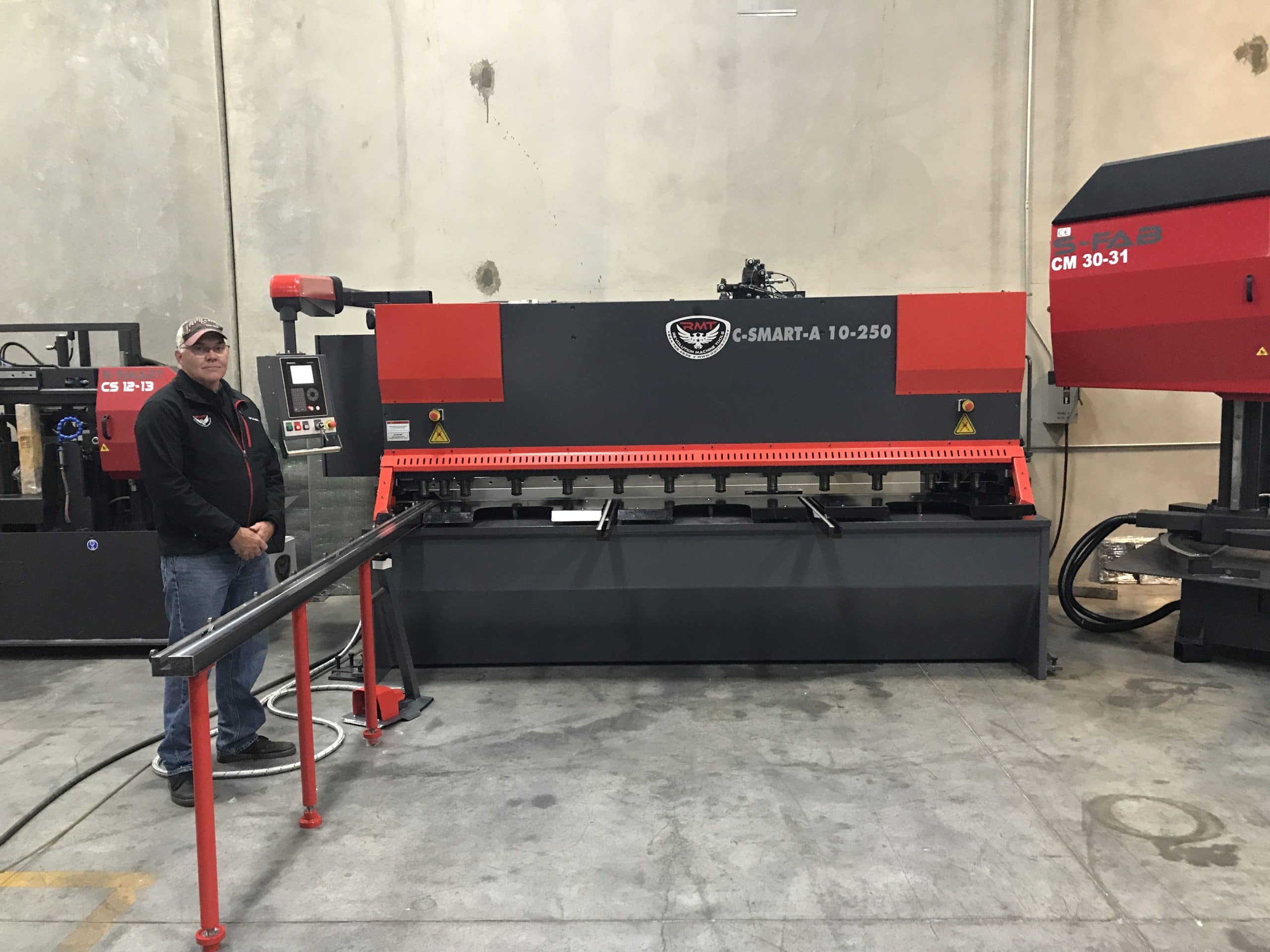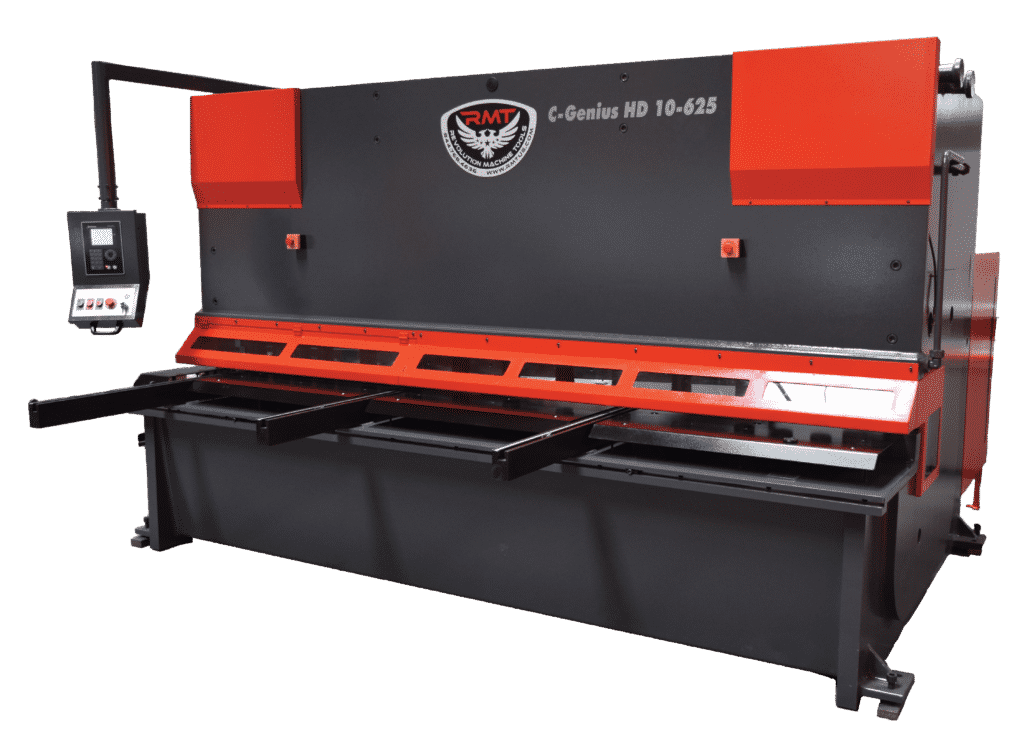
Early History of Cutting Metal
Prehistoric humans learned how to make and use tools, first of stone, wood and bone, but later of metal. Gold, copper and silver were some of the original metals worked with, as they are considered “Native Metals,” or metals that don’t have to be first extracted from other metals or minerals. Lead and tin joined them as metals that could be wrought or beaten into useable shapes. The application of heat to soften metals became commonplace and eventually melting metals and pouring them into molds to cast them into different forms moved into wide use.
Once gold and copper pieces were flattened enough to become thin plates, early metalworkers found that they could not only inscribe them with designs using harder tools, but they could use some of these same tools to trim the edges of this decorative sheet metal or even divide it into separate pieces. Thus, the craft of metal cutting was born, first with knife-like objects scoring the metal repeatedly to result in a cut, later with primitive hacksaws that would remove small chips until the metal was severed.
The very first machine with movable parts created for cutting materials was basically a variation on today’s scissors. A piece of bronze would be flattened at both ends to form blades, while the section in between them would be partially flattened in the opposite axis and then bent around a radius to make a tong-like contraption. When completed, the blades of this instrument would be parallel to each other with a minimum offset or “blade gap” between them and would pass each other without losing their relative positions as the user pinched them together. The spring tension in the flexible bronze strip connecting them would then pull them back to their original arrangement when the tension of the user was released. This formation of passing blades to cut things has continued to be utilized through the millennia and is the basis for the metal-cutting shears of today.
Spring-loaded blades eventually gave way to hinged scissors, which were developed during the Roman Empire. Both types of snipping devices were initially used for cutting fabric and fibers, such as hair and wool. The development of heavier tools out of harder materials led to the invention of the predecessor of the modern tin snip. These simple machines made the shearing of thin sheets of pliable metal a relatively easy task. (Of course, no sooner had the efficient separation of metal been developed, people wanted to connect it back together again—and welding was invented.)
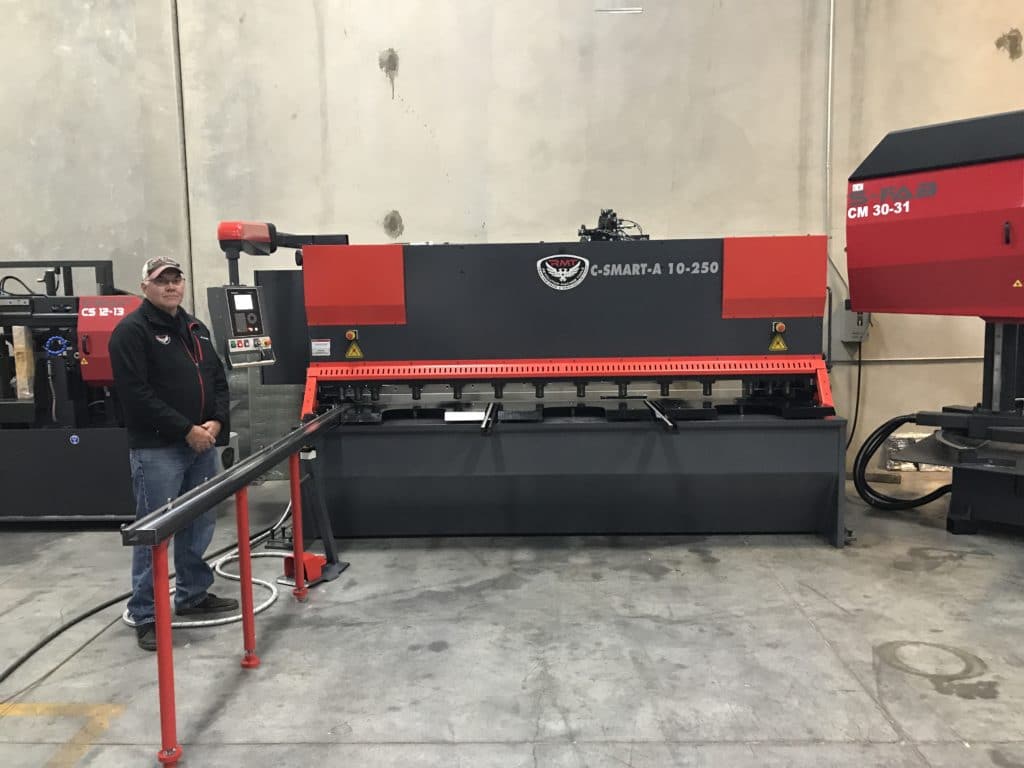
Development of the Metal-Cutting Shear
To appreciate the history of plate and sheet metal shearing, it’s essential to understand just how revolutionary the invention of sheet metal itself was. Instead of requiring a smith to hammer a soft metal (or heated iron) into a flattened shape, the innovation of the rolling mill in the 16th century completely changed metal part production.
First utilizing heat to soften the metal, then progressing to cold rolling thanks to the high pressure available through modern hydraulic power, the idea of rolling metal to thin it applied a concept known to bakers for centuries. Instead of using a rolling pin on a countertop, however, the rolling mill incorporated two heavy cylinders rotating in tandem to produce the required thickness of metal uniformly throughout the finished sheet.
With large sheets of metal available to fabricators, the development of large-scale cutting devices was destined to follow. While handheld tools like tin snips and later throatless shears were dependable configurations—both are still in wide use today—the need to cut down whole sheets into blanks for production prompted machinery builders to get more and more creative.
Instead of the two moving blades of scissors, shearing machines for the most part employed a stationary bottom blade with a moving top blade. The hinged, scissor-like formation of bringing blades together in an angular shearing action was maintained in many designs. Lever-type shears evolved into large alligator shears and small bench shears (a common fixture still found in shops).
The creation of the guillotine shear—literally named for the execution device made famous in the French Revolution—utilized a design similar to its namesake: a blade moves straight down a Y axis to sever material at the bottom of the stroke. Like the French guillotine, this shear is equipped with a slanted blade, though at a much smaller angle to minimize part deformation. Known as “rake angle,” this slope to the blade, much like scissors, introduces only a small part of the blade to the material at any given point as it advances the cut from one side to the other.
Just as it is easier to cut a slab of meat by drawing a knife towards you while you apply downward pressure, rake angle allows shear blades to slice through a long workpiece with much less force than a straight vertical cut. Depending on the power of the shear and the material it is designed to cut, a rake angle ranging from 0.5 to 2.5 is common. The lower the rake angle, the more precise the cut, but also the greater pressure is needed.
By the dawn of the 21st century the innovation of the variable rake shear gave fabricators the ability to cut different thicknesses of metal on the same machine. Higher rake is used for shearing thicker parts, while switching to a lower rake angle enables thinner metal to be cut with greater precision.
Along with the guillotine shear, a prevalent model sold today is the swing beam shear. The upper (or “swing”) beam on these machines is a ram-mounted blade that hinges on a fixed pivot point in the side frames and uses leverage to increase the tonnage of the stroke as it swings down to shear the workpiece.
While different power sources for shearing devices have been created over the years, almost all of them are still in use today, from manual mechanisms like hand-operated lever shears and
foot (or “stomp”) shears to electric, pneumatic and hydraulic machines. Many old flywheel-driven mechanical shears can even still be found in use.
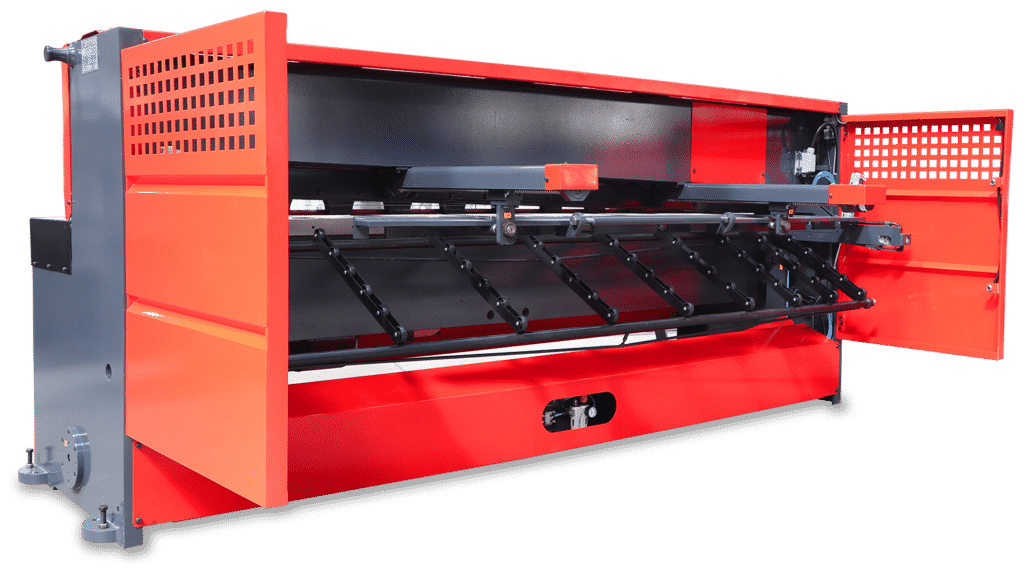
Does Your Shop Need a Shear?
It wasn’t that many years ago that press brakes and shears were practically sold in sets to fabricators just starting up and those upgrading alike. After all you can’t bend a sheet of metal until it is first cut to the specifications of the part and buying precut plate metal can significantly lower the profit margins of the job. Once technology reached a certain point however—with the advent of cutting with plasma, waterjets and lasers—many shop owners began to think of shears as being more and more redundant for their operations.
Yet shears remain a staple in many shops, and for very good reasons:
- Shears offer a quick setup time for jobs.
- Shears are extremely easy to use—place, clamp, cut.
- Shears are exceptionally fast, able to cut through most workpieces in just seconds.
- Shears can usually cut many different thicknesses of metal.
- Shears can usually cut a wide variety of different metals.
- Shears create a relatively clean cut with smooth edges.
- The waste metal from shearing can often be used for other projects, such as testing other machines (something that can’t be done with chips from saws, etc.).
- Shears have low operating costs when doing a quick job, compared to powering up a plasma or other high-tech cutter.
- Shears are very cost-effective for high-volume fabrication.
When in doubt about shears or any other metal fabrication machine, be sure to talk to a knowledgeable advisor about what is most practical for your shop’s day-to-day operation. If you don’t already have such an advisor—and even if you do—give the machine tool consultants at Revolution Machine Tools a call and pick their brains for a few minutes. They sell only the top of the line in high-end shears, as well as all other major types of metal-cutting equipment, so they can give you the very best pointers on what machines you need to fit your budget and business.
Metal shearing has been the backbone of manufacturing and fabrication work since the beginning of metalworking as an industry, long before recorded history. Just as hydraulic power and CNC operation have already improved shears to a technological point unimagined by fabricators of just a couple of generations ago, so these marvelous machines will continue to evolve and will always have an esteemed spot reserved for them in metal fabrication shops.


